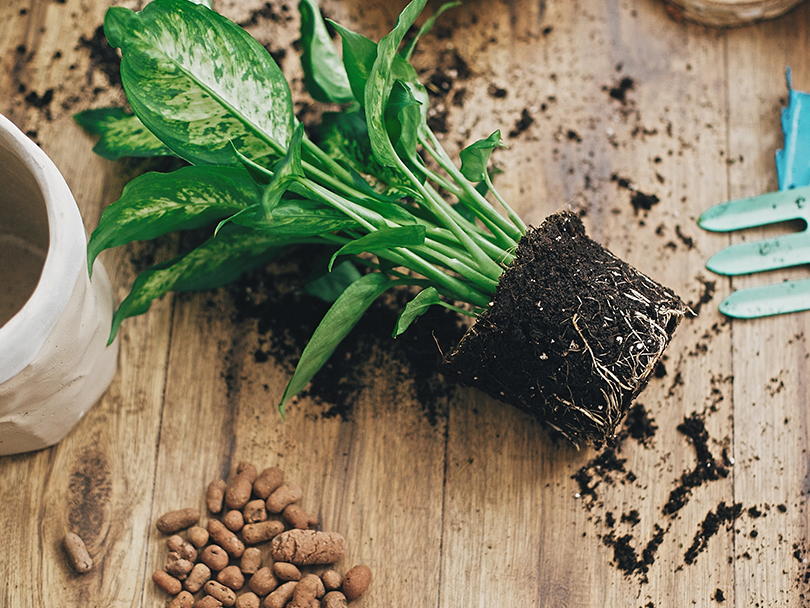By Vicki Spencer, Master Gardener
As summer winds down, September is a good time to move container and garden plants indoors. This way you can protect expensive tender bulbs from severe winter temperatures and enjoy favorite annuals and herbs until you are ready to put them out again next spring.
Some common tender bulbs include caladium, calla lilies, cannas, dahlias, elephant ears and tuberoses. If they are already in pots, simply stop watering and cut off dying foliage before bringing them inside. If they are in the ground, dig them up, cut the foliage back and gently brush off the soil. Let them dry for seven to 14 days before packing them loosely in a cardboard box or open container, separated by shredded newspaper or dry peat moss. Store the bulbs in a cool, dark place.
Some garden plants that grow well indoors include amaryllis, begonia, caladium, coleus, geranium and tropical hibiscus. Consider their health when selecting which ones to move inside. Unhealthy plants have difficulty adapting to different growing conditions and may be infested with insects. Check for pests in the potting medium by soaking the pots in a tub of lukewarm water for 15 minutes. Unwanted pests will come to the surface in search of air, in which case, you should repot. Examine pots for earthworms, snails and ants, and then scrub the pot exteriors with a 10% bleach solution and hose it off. Examine the leaves for small insects such as aphids, mealybugs and spider mites, then hose off the leaves and treat them with insecticidal soap or neem oil. You should quarantine plants indoors for a few days to protect houseplants from any hitchhikers you may have missed.
Prune or repot plants a few weeks before moving indoors to avoid too much stress at once. Don’t prune more than one-third of the foliage. To repot, use a hose to remove the potting medium from the root mass and trim the root tips. Clean the inside of the pot with a 10% bleach solution, rinse and cover the drainage hole with a screen before adding new soil. Since indoor light and humidity will be different, you can acclimate plants gradually over a couple weeks by moving pots to lower outdoor light conditions. Bring pots inside in the evening and back outside in the morning for a few days.
It’s always challenging to find the ideal location for plants. As a rule of thumb, those requiring full sun do best near south-facing windows and those only needing partial sun flourish in east- or west-facing windows. Avoid placing clay pots and saucers directly on floors and carpets as they may stain or cause mold. I use plastic saucers or buy colorful dinnerware from secondhand stores to place under the pots. Hang ceiling hooks for hanging plants. Group plants together to increase humidity.
Even if you follow these suggestions a few leaves may still yellow and drop. Don’t worry; plants need time to adjust to new conditions and a little leaf drop is a normal reaction.
Gardener Vicki Spencer has an eclectic background in conservation, water, natural resources and more.

